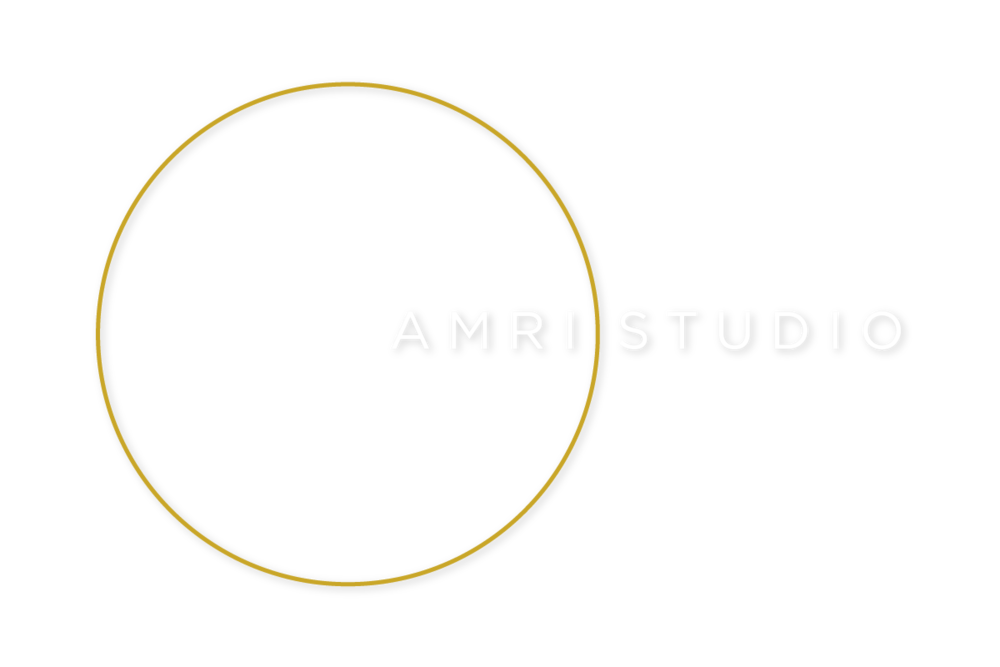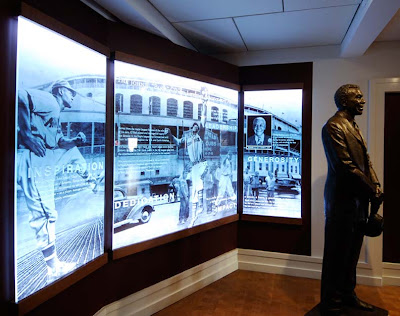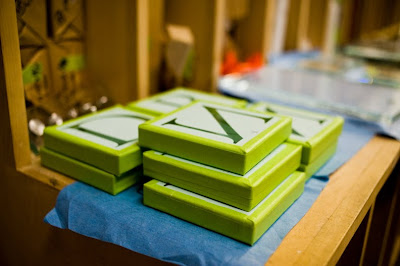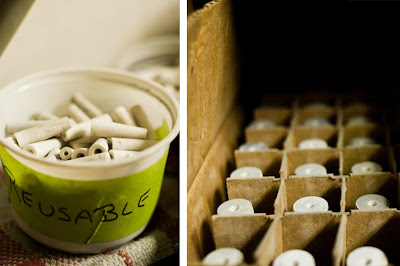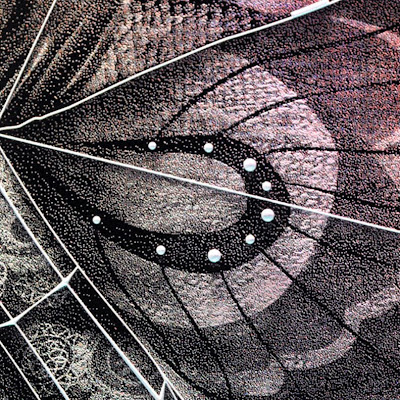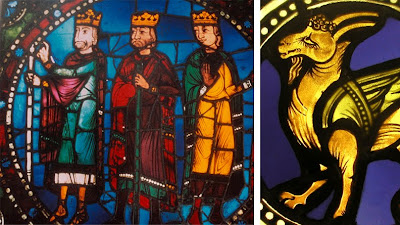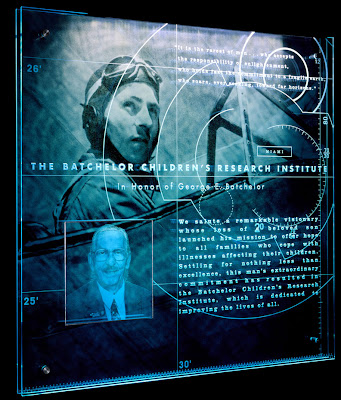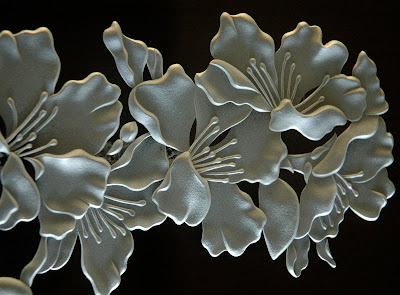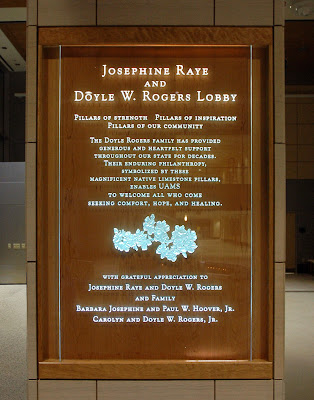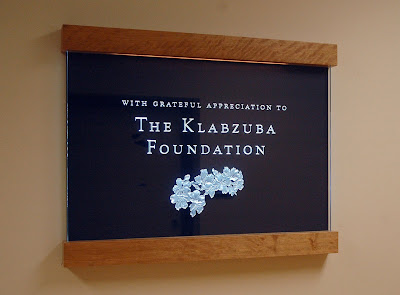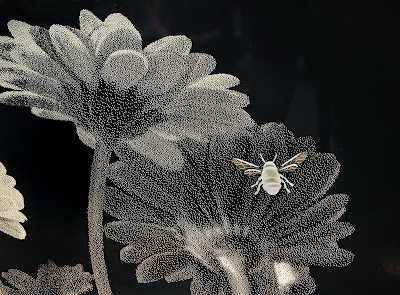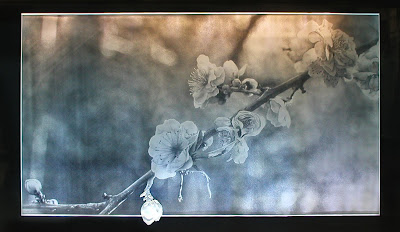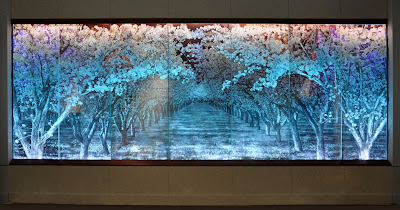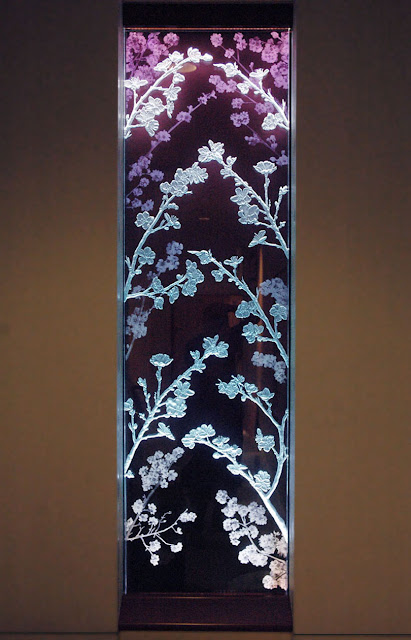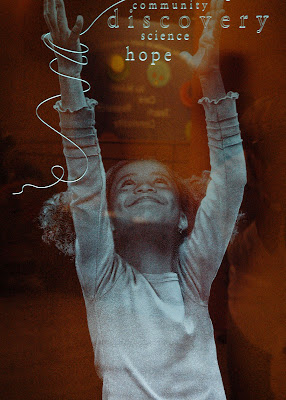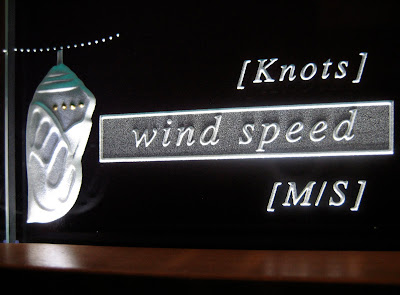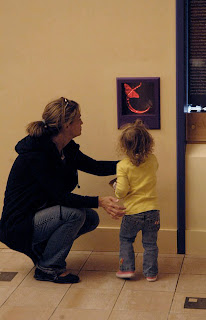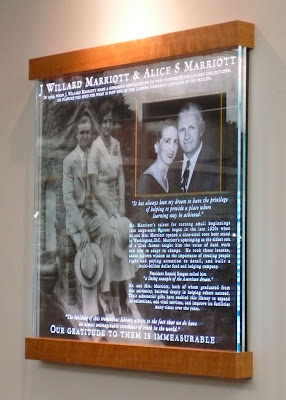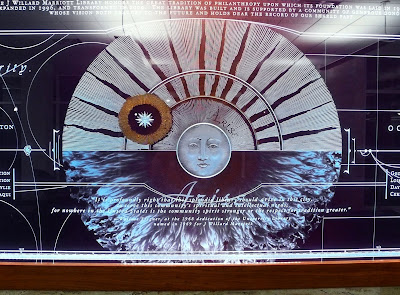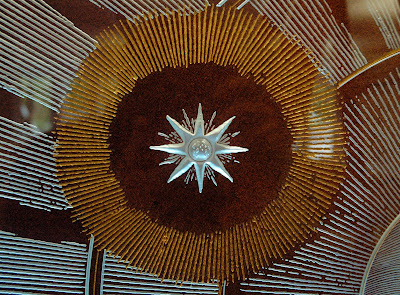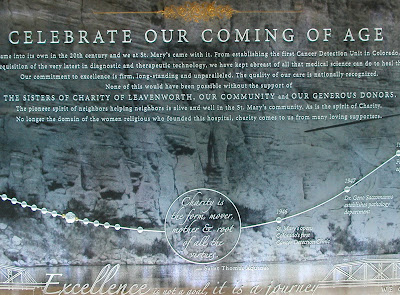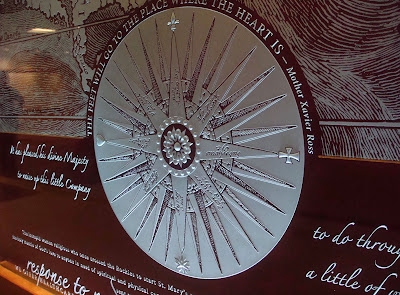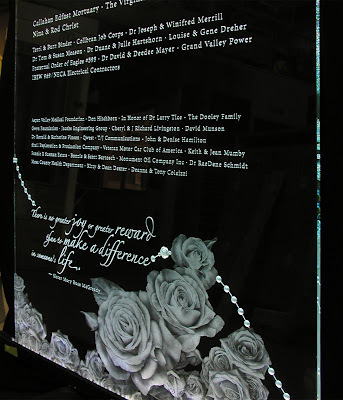 Art condenses the experience we all have as human beings, and, by forming it, makes it significant. We all have an in-built need for harmony and the structures that create harmony. Basically, art is an affirmation of life.
Art condenses the experience we all have as human beings, and, by forming it, makes it significant. We all have an in-built need for harmony and the structures that create harmony. Basically, art is an affirmation of life.
TREVOR BELL
This is the time of year when I look back on what we've achieved and am filled with gratitude for the chance to work with some extraordinary institutions and equally extraordinary people. In 2010, we created Donor Recognition Art for huge medical research institutions and a 12-bed hospice, for a major university and a small but fast-growing community college in the Ozarks. We carved and etched single panels for some clients, and 100-foot-long crystal murals for others.
Each of these projects was deeply meaningful for me and my staff. Without exception, we were enlarged by the people we worked with, the causes we learned about, and the challenges we met. Thank you all for the opportunity to practice our art and celebrate your patients, clients, staff members and community of donors! We feel truly blessed!
Here is a quick tour of this year's projects, organized by the purpose of the project.
Donor Recognition Art

 At St. Mary's Hospital in Grand Junction, CO, cascading garlands of roses were carefully carved into eighteen crystal panels, while an etched rosary of pearls and gold-leafed beads led visitors from the lobby into the heart of the building. St. Mary’s deeply held values were carved into the crystal along with the names over 900 donors.
At St. Mary's Hospital in Grand Junction, CO, cascading garlands of roses were carefully carved into eighteen crystal panels, while an etched rosary of pearls and gold-leafed beads led visitors from the lobby into the heart of the building. St. Mary’s deeply held values were carved into the crystal along with the names over 900 donors.

A crystal wall with individual Donor plaques stretches along a hallway at the amazing Computer History Museum in Silicon Valley. This type of wall is extremely flexible, allowing for many new Donors at a wide range of giving levels.

 The themes of nature and medical science merge in this Donor Recognition System at the Community Hospital of the Montery Peninsula in Monterey, CA. Floating bars of DNA sequences stacked along the bottom of the crystal panels morph beautifully into patterns of light dappling sunlit waters where an egret is poised for flight.
The themes of nature and medical science merge in this Donor Recognition System at the Community Hospital of the Montery Peninsula in Monterey, CA. Floating bars of DNA sequences stacked along the bottom of the crystal panels morph beautifully into patterns of light dappling sunlit waters where an egret is poised for flight.
We are always delighted when we are asked back to an institution with whom we have worked before, and this was the case at the Eccles Critical Care Pavilion of the University of Utah Hospital. In 2002-2003, we created a very large Donor Recognition System for them, on which we carved the names of some 2,800 Donors -- every single person who made a donation, from local philanthropists to the hospital janitor!

This year we created a smaller "sister" wall to honor yet more donors, who funded the hospital's airy new two-story lobby. In creating this new wall, we used the same materials –- carved crystal and gold-leafing -– the same theme, and the same design vocabulary so that the two walls would have artistic unity.

The University of Miami Alumni Association asked us to design Donor Recognition Art that celebrated the Donors who enabled them to build a beautiful new Alumni Center. We created a grid of interlocking crystal panels deep-carved with Donor Names. A rendering of the new Robert and Judi Prokop Newman Alumni Center, designed by the celebrated architect Michael Dennis, serves as the backdrop.

At the NorthWest Arkansas Community College in Bentonville, AR, we carved and etched Donor Recognition Art to honor Donors to their Building for the Future Capital Campaign. We used lacy silhouettes of young trees as the background to the Donor Names. These trees characterize the local landscape near the college and reflect the youth coming to college.
Major Donor Tributes
There are some individuals so blessed -- and so generous -- that they are able to make very large donations to the institutions they believe in. We had the honor this year of creating tributes to three such individuals.

The first was Abra Rockefeller Prentice Wilkins, the Naming Donor for the Prentice Women's Hospital in Chicago. Mrs. Wilkins is one of Chicago's most treasured philanthropists and an energetic advocate for women’s health. Her donations first established the hospital, then enabled its expansion and move into a state-of-the-art facility that contains one million square feet of top-notch healthcare for women and children.
 At the renowned Children's Hospital of Philadelphia, we created a tribute to Ruth M. and Tristram C. Colket, Jr., whose lead donation enabled the building of the new Colket Translational Research Building. "Translational research" is medical research that is focused on dramatically shortening the time it takes for a scientific discovery to be "translated" into medicine that can heal people -- and this world-famous hospital is a leader in that field.
At the renowned Children's Hospital of Philadelphia, we created a tribute to Ruth M. and Tristram C. Colket, Jr., whose lead donation enabled the building of the new Colket Translational Research Building. "Translational research" is medical research that is focused on dramatically shortening the time it takes for a scientific discovery to be "translated" into medicine that can heal people -- and this world-famous hospital is a leader in that field.

 In Ohio, our hearts were touched at the opportunity to create a tribute to Benjamin and Marian Schuster, Naming Donors for the Schuster Heart Hospital. Dr. Schuster is a longtime heart specialist and his wife was a major supporter of the arts in the Dayton area. The Schusters were known in their community almost as much for their love of each other as for their contributions to the community. To honor this aspect of their lives, we overlaid some of Shakespeare's poetry onto the Tribute text we wrote: "My bounty is as boundless as the sea, my love as deep. The more I give to thee, the more I have, for both are infinite."
In Ohio, our hearts were touched at the opportunity to create a tribute to Benjamin and Marian Schuster, Naming Donors for the Schuster Heart Hospital. Dr. Schuster is a longtime heart specialist and his wife was a major supporter of the arts in the Dayton area. The Schusters were known in their community almost as much for their love of each other as for their contributions to the community. To honor this aspect of their lives, we overlaid some of Shakespeare's poetry onto the Tribute text we wrote: "My bounty is as boundless as the sea, my love as deep. The more I give to thee, the more I have, for both are infinite."
History/Heritage Walls
Also at the Schuster Heart Hospital, which is part of the Kettering Medical Center, we had the opportunity to create a fascinating combination History Wall and Tribute to inventor Charles Kettering, after whom the medical center -- and the town where it is located -- are named.

 The History Wall consisted of three sections and concluded with photos of Kettering's son, Eugene, and his much-admired wife, Virginia. Charles Kettering was the embodiment of American ingenuity. He is best known for his invention in 1911 of a push-button starter for automobiles -- an innovation that made it possible for women to drive without the help of a well-muscled man to turn the extremely stiff starter crank. By the end of his busy life, Kettering had filed 140 patents, risen to international prominence as an inspiring leader, and become a major philanthropist.
The History Wall consisted of three sections and concluded with photos of Kettering's son, Eugene, and his much-admired wife, Virginia. Charles Kettering was the embodiment of American ingenuity. He is best known for his invention in 1911 of a push-button starter for automobiles -- an innovation that made it possible for women to drive without the help of a well-muscled man to turn the extremely stiff starter crank. By the end of his busy life, Kettering had filed 140 patents, risen to international prominence as an inspiring leader, and become a major philanthropist.
In this History Wall, programmed and colored LEDs light up in sequence to convey a feeling of moving forward — echoing the result of Kettering’s many inventions and the forward-looking work of the Kettering Medical Center.
We created a second and even longer Heritage Walk at St. Mary's Hospital, in a corridor adjacent to the Donor Recognition Art that I described above. 
 This 100-foot-long carved and etched crystal Heritage Walk weaves together St. Mary's deeply held religious values with the story of its long and colorful history, told in archival photos, words and graphics. Deep, 3-D carved and chisel-cut letterforms and graphic elements "pop" almost holographically. Photographs -- ranging from archival pictures of pioneering nuns to recent pictures of a CareFlight helicopter -- are converted into dots and etched into the crystal using our DPI dither process.
This 100-foot-long carved and etched crystal Heritage Walk weaves together St. Mary's deeply held religious values with the story of its long and colorful history, told in archival photos, words and graphics. Deep, 3-D carved and chisel-cut letterforms and graphic elements "pop" almost holographically. Photographs -- ranging from archival pictures of pioneering nuns to recent pictures of a CareFlight helicopter -- are converted into dots and etched into the crystal using our DPI dither process.
Art Glass
Because we are the deepest carvers of glass and crystal in the country, we are often called upon to create Art Glass installations that are desired for their sheer beauty. This year, we worked with the University of Notre Dame to transform an aerial view of their famous campus into a wall of crystal for their new Alumni Center.

I wrote a blog post about this fascinating project in September -- check it out! The post includes a link to a time-lapse video showing us installing this 16-foot-wide mural.
 You'll find another fun time-lapse video in my blog about the chapel we created at Prentice Women's Hospital, which I mentioned earlier in this post. The non-denominational Mathews Chapel was built from unused office space, a fact you would never guess when you walk into this sacred space with its "acres" of blossoming almond trees, lit with soft pink LEDs.
You'll find another fun time-lapse video in my blog about the chapel we created at Prentice Women's Hospital, which I mentioned earlier in this post. The non-denominational Mathews Chapel was built from unused office space, a fact you would never guess when you walk into this sacred space with its "acres" of blossoming almond trees, lit with soft pink LEDs.

Lastly, I want to share with you two projects that we have been working on here in the Studio as a way of exploring design and fabrication possibilities.

These graceful calligraphic explorations are a timeless translation of original copperplate engravings that were master’s exemplars of penmanship in 1780's. I think they look amazing rendered in carved crystal. 
Another exploration is this eye chart, the design of which is intended to exercise the viewer's third eye. The chart, which was also sourced from an original copperplate engraving, has a lightly frosted background. Delicate V-carved lines and dots, inspired by scientific eyesight diagrams, weave and cascade across the frosted glass. At the bottom, Einstein encourages us to “experience the mysterious –- the source of all true art and all science.”

If you've read this far, I commend you! You can see that we had a wonderful -- and very full -- year. Thank you for being part of it!
May your new year be filled with creative joy and deep satisfaction,

Photographs by Gabriel Harber and Studio staff and consultants
